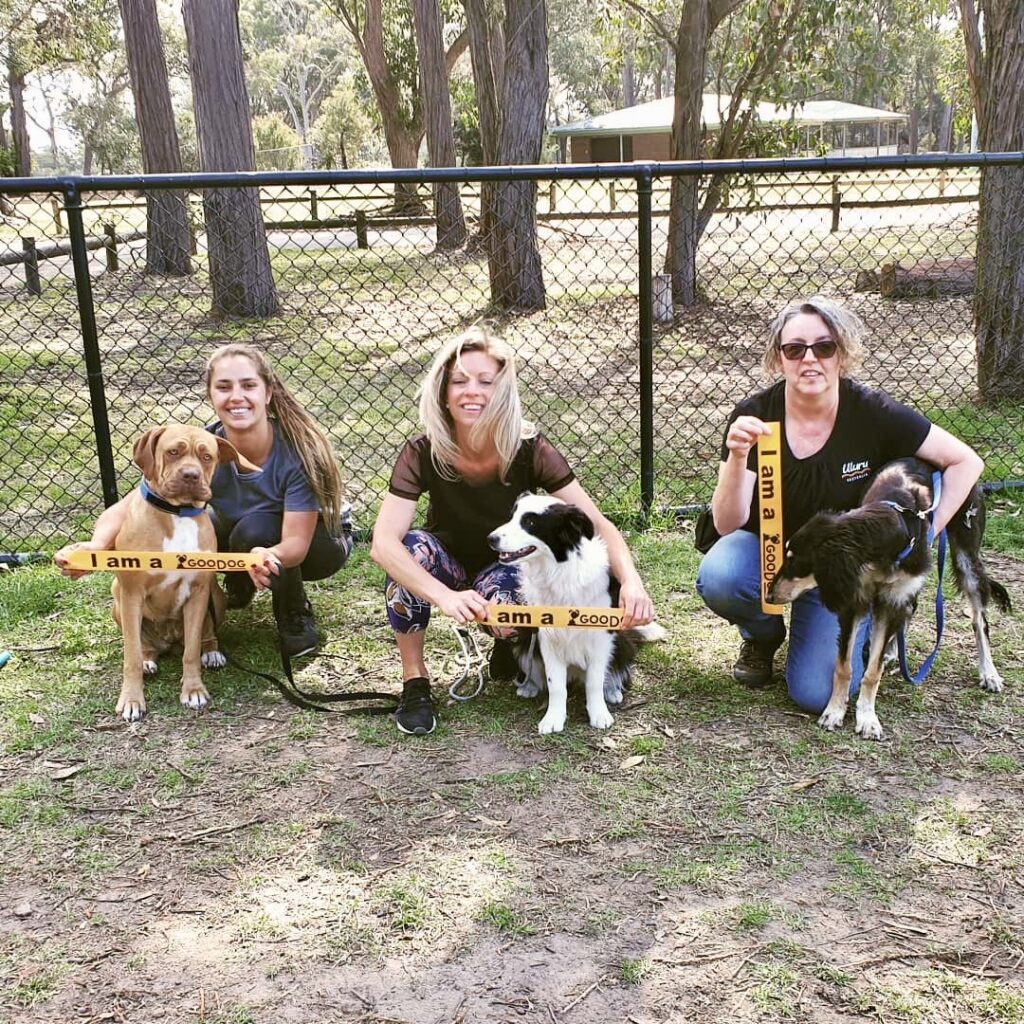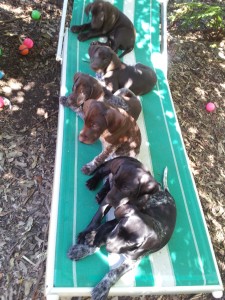My puppy is house trained, she just has the occasional accident.
If that ‘occasional accident’ is once a year, I would agree. If it is once a month I do not.
A house trained dog should have no accidents unless they are unwell, have been locked up for too long, are having a stressful time or something else unusual is happening in their life.
If you are still having accidents you need to go back to basics. The puppy has to go out after a sleep, after a play, about 15 to 20 minutes after they have eaten and every hour in between.
You also have to stay out there with them until they have done their business. Otherwise you do not really know if they are ’empty’.
It is a good idea to take them to the same place. You need to reward, not with ‘good dog’, but with a treat! You have to clean up the poo, dogs do not like to go to the toilet where there are feces. They will go back where they smell the urine.
If you clean up in the house, do not use ammonia based cleaners, use Urine off or similar.
For more info contact me via the contact page and I can send you a handout.
and I can send you a handout.
Category: Blog
My old dog was never that active! My old dog learnt this much quicker.
I feel for the puppies that have to follow an old dog.
I think we tend to forget and we are often more than 10 years older than when we had the last puppy.
Puppies have not changed much, they nip, they chase, they wee in the house, they don’t sleep at night, they want to be with you all the time.
When they are teenagers, they will not come when called, they seem to have forgotten basic cues, they regress in house training, they become a bit stroppy at the dog park.
And then they turn into well adjusted adult dogs!
No, the puppies do not change, it is us who forget!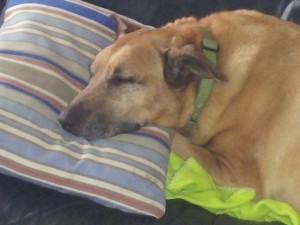
Does your dog really need to ‘heel’?
Only if you do competitive obedience otherwise a different skill set might be handier.
In our classes we do teach ‘heel’ but only because it then makes it easier to teach both the dog and the owner to walk on a loose leash.
If you want to know exactly keep on reading.
Loose leash walking – It is a difficult concept.
Imagine, two different species, one two legged, one four legged, one sniffs, one watches and they are trying to walk down the street at the same pace.
The dogs do not get it and most owners don’t get it either.
Before you start you will need a few things: a flat collar, a front clip harness, treats, patience and a bit of spare time. It does not matter on which side your dog walks, I would actually teach both sides.
We will teach the heel position first as the dog will not understand the concept of a loose leash.
To get going:
• Teach the heel position first, teach it on both sides.
• Put the leash in your right hand, the dog is on your left side, the leash connects to the dog with a slack in front of you, a handful of treats in your left hand. And change for the other side.
• You are making the position on your left knee a high reward zone.
• Get attention, ask for a sit, step off and lure the dog into the correct position (head on your left knee). As soon as the dog is in the correct position, say yes or click and reward.
• Repeat and gradually increase your criterion, reward after two steps, three steps, seven, ten etc
• Do short sessions on your walks.
• Do short sessions without lead in the backyard or in a fenced area.
• If your dog pulls, stop, ask her to come back to the correct position, do a few steps and reward.
Once you start teaching heel you cannot change the goal posts on your dog. This means if you cannot insist on a loose leash but still have to walk the dog you need to change something in the set up. Otherwise you are confusing the dog. I recommend using a flat collar if you train heel/walking on a loose leash but use a front clip harness if you are not training and accept a bit of pulling or lagging.
Once your dog gets the heel position; gradually start relaxing criterion and let your dog walk a bit ahead, behind etc as long as there is not tension on the leash. If the dog pulls, stop, ask him to come back into the heel position, and reward after a couple of steps in the right position.
The most common problems are:
• Too low reinforcement rate, in the beginning you have to reward every step. Loose leash walking is boring and difficult for both of you!
• But then you have to up criterion very quickly.
• Walking straight lines. If you walk a straight line the dog is very likely to surge ahead. Try walking curves or figures of eight.
• Session is too long, keep it short and sweet.
• Reward for coming back into the correct position. If your dog pulls and you ask him to come back into the position and then reward, you will get a yo-yo action. Dog pulls, dog comes back because you are rewarding the coming back rather than the correct position. You have to get the dog to walk for a couple of steps in the right position before your reward.
• Walking on a tight leash. If you hold the leash tight, the dog thinks that is what you want. You need a loose leash.
• Relaxing criterion too early – the dog has to understand the heel position as a high reward zone first.
And by the way, do you know why we walk the dogs traditionally on the left? It is a left over from the military training: Holding the gun in the right hand so the dog has to walk on the left.
Have fun and a little bit of patience!
I have talked to a lot of dog owners this week about fear of thunderstorms or even worse thunderstorm phobias.
This is an extremely distressing situation for the dog and the owner.
As with most cases, prevention is better than cure. If you have a dog or puppy who is not scared of thunder, storms or noises, keep it that way. Use the Sound Proof Puppy App to get them used to all these noises and play/feed/interact with them when storms approach so the have a positive association with the potential trigger.
If you have a dog that is already scared but can cope, start a counter conditioning process during the off season and again make the storms a happy occasion.
If your dog is more worried you could try a Thundershirt, ADAPTIL, give them access to a safe place and start counter conditioning.
If it is really bad you might want to consult a veterinary behaviourist for medication.
This is Zorbas in his thundershirts.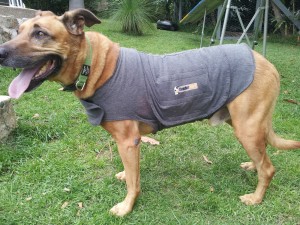
Tired dog happy owner.
I see a lot of pictures of destroyed yards, couches, dog beds… you name it.
Most dog owners underestimate the amount of mental and physical stimulation dogs need so they can be calm when left at home.
In most cases a walk around the block will not be enough.
I recommend two walks a day of at least 30 to 40 minutes, one should include some off leash time to run and run and run some more. I also recommend doing a bit of training on the walk, loose leash walking, sit, attention.
Two to three short training sessions at home for some trick training and to be on the safe side, feeding some of their meals out of food dispensing toys.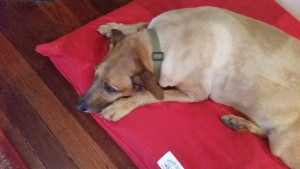
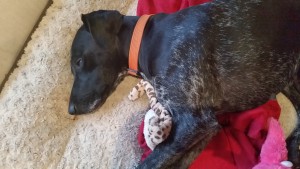
One of the essential skills we teach in our teenage and rescue training classes is to walk past other dogs calmly. Either in a coffee shop or on the footpath.
When I took the dogs for a walk this morning we met three other dogs: One was barking, one was lunging and barking and one was ‘just’ straining on the leash to get to mine.
I do not recommend on leash greetings and I ask my dogs to come into a heel position and walk past or when the other dog really goes off, we move further away, they look at me and wait. I obviously reward them for being calm.
The interesting part for me was the lunging and barking dog. Zorbas just ignored him completely but Shellbe was going close to threshold.
This shows I have not trained her enough so she is completely confident in these situations and can ignore it. On the other hand it shows that years of training and counter conditioning with Zorbas are paying off big time.
There were two other situations recently when we were walking and off leash dogs ran up to us. He either greeted them appropriately or when he got stressed look at me for instructions.
How to train a great recall is not as hard as it seems. Goodog owner Barbara takes you through the steps below. Or, join a Goodog Recall Workshop and learn how to train a great recall from Barbara herself.
Gee we were lucky. We did a great recall workshop this afternoon and we did not get wet! In the last exercise the dog runs past an open food container with BBQ chicken in it and their human students looked at me as if I was from Mars and they would never ignore the chicken. And then, they all did it, ignored the chicken and performed a fantastic recall.
For some dogs come means to run as far away as you possibly can, and if possible migrate to the next country, well maybe just the next dog park. These dogs have learned coming back means we are going home and the end of the fun.
Of all the basic cues to teach your dog coming back is probably the most important and sometimes the most difficult one. Coming back under all circumstances and has many benefits and can avoid real problems, such as being run over by a car, a confrontation with another dog, meeting a snake or just a kid that is scared of dogs.
Dogs do not come back because the world out there is very rewarding and the off leash time is often the best part of the day!
But it is possible and very rewarding to teach your dog to come back if you stick to some basic rules:
- Teach the dog what come means
- Make it worthwhile for your dog
- Manage the environment and prevent self reinforcing
- If you are in the dog park, release them after they return
- Never ever punish or rouse on a dog that came back (even after 2 hours)
Teach the dog what come means
- Take a piece of food or a toy, show it to the dog and move backwards saying come, as soon as the dog catches up to you give them the treat/toy. You are associating the word come with moving towards you and in a position close enough for the reward.
- At the same time hold your dog gently on the collar. This is a safety measure to get your hands on your dog in an emergency. You also don’t want a ‘drive by dog’ – a dog that comes, takes the treat and takes off again.
- Once the dog understands this, call the dog between family members in the house or the backyard and make it a really great game. You then take this game to a slightly more distracting environment like a fenced dog park at low traffic times.
Make it worthwhile for your dog
- You have to figure out what is most rewarding for your dog, a specific squeaky toy, some really nice treat, a play with you, or a cuddle? Once you have figured this out reserve this special reward for coming back and the dog only gets it when they come back.
- Do not phase out the reward and don’t be stingy, a pat on the head will not cut it. A jackpot improves motivation.
- Manage the environment and prevent self reinforcing.
- In the early stages you will have to manage the environment very carefully. Work with long leashes or in fenced off areas. Then gradually make it more difficult.
If you are in the dog park let them go again, after the recall
If you are in the dog park, call your dog every 4 or 7 minutes with a happy voice, give them a really nice treat or have a quick play, but then let them go again. Coming back should not signal to them that it is the end of the fun. Also reward when your dog is checking in with you.
Never ever punish or rouse on a dog who came back
Even if it took 2 hours to get your dog to come back to you, you have to reward them for coming back. If you punish, it will only set back the progress you’re making with training. Your dog just showed you that you both need to improve your training.
If you’d like to know how to train a great recall in-person, find out when the next Recall Workshop is scheduled here: Recall Workshop.
I love trick training. Occasionally I get a client who tells me: But I only want my dog to ‘heel’, or come when called, or go to the mat during dinner times.
While I train all of these behaviours, I do think trick training makes life much easier.
Your dog does not really care if the behaviour you teach is something useful (in the humans perception) or a trick. But the humans are much more relaxed when teaching tricks and it is much more fun for both.
Once you can teach tricks the ‘useful’ things become much easier and all of a sudden, even teaching to heel becomes fun.
I got my dogs because I want to spend quality and fun time with them.
Try a couple of tricks and see how you go!

A puppy is not an accessory! And no you do not need one to be the perfect family.
There are puppy classes on offer every single day of the week, day time, evenings, weekends. If you cannot find time to do any of those please do not get a puppy.
The window of socialisation is only open for a short time and will never come back.
I met another dog recently whose owners did not have time to socialise the puppy properly. They now have a dog who is scared of other dogs, bikes, people with crutches or pack packs and much more. You name it and the dog is scared of it.
This is not a life, not for the dog nor for the owners. This dog will most likely end up in the backyard or in rescue. If the dog goes to rescue he will become a statistic, which means euthanized before he turns three years old.
This is just so very sad! And very wrong.
If you do not have time do not get a puppy!
I have been going on about empathy in dog and human training for a long time now. I think in addition to having a solid education and experience empathy is one of the most important traits of a good trainer.
Only too often do we trainers get caught up in our own little world forgetting that others are in a complete different situation. Most of our clients are not interested in formal obedience, competition heeling or out of sight stays. I mean, who really cares except obedience competitors. Most of them are also not interested in agility and that is just fine.
That’s when another important aspect of developing training solutions becomes important: creativity.
As a trainer we need to suggest training plans that work for that specific client with their specific dog. Anything else is a waste of time, money and effort.
